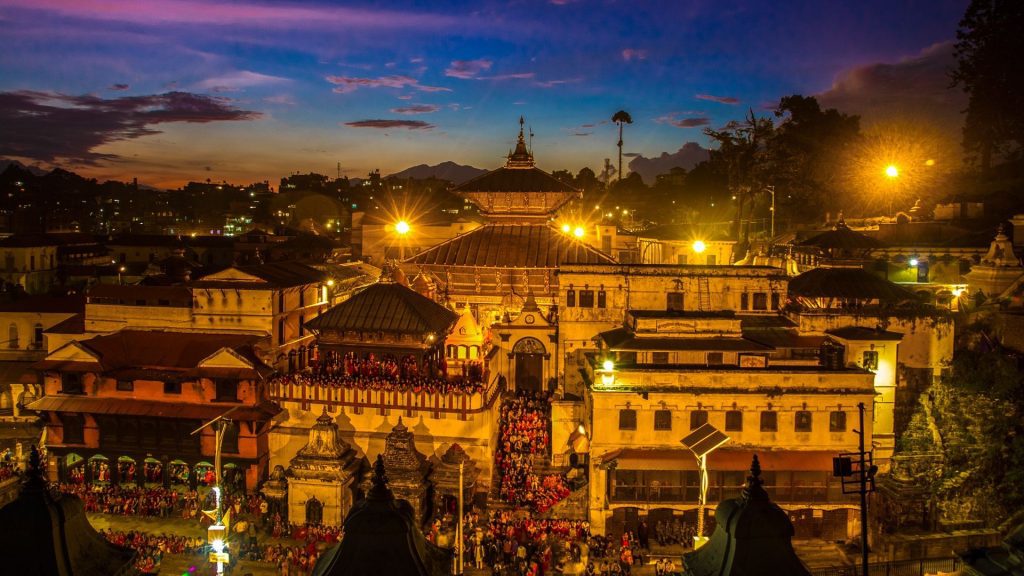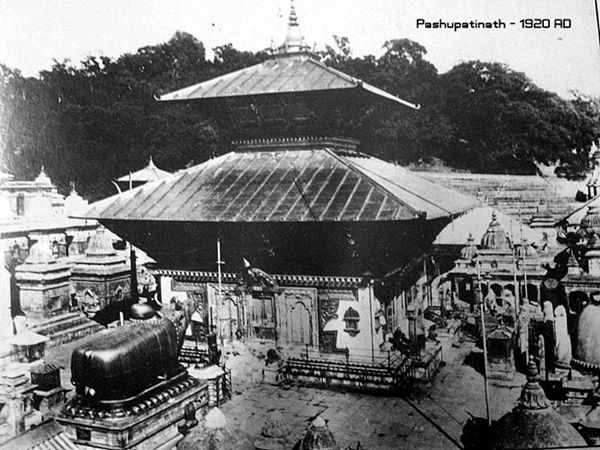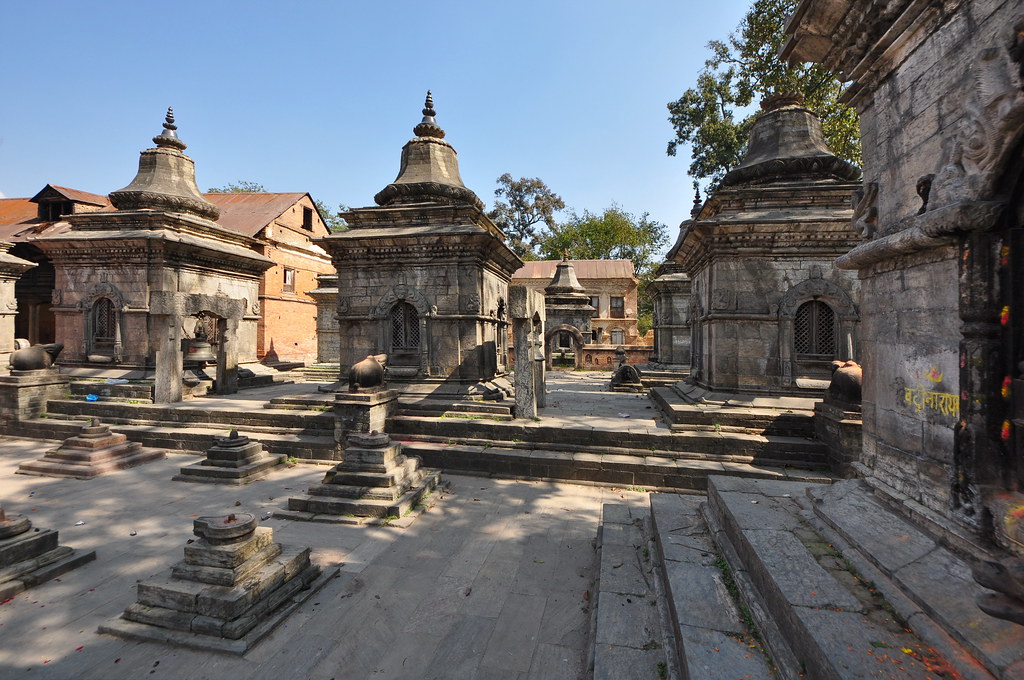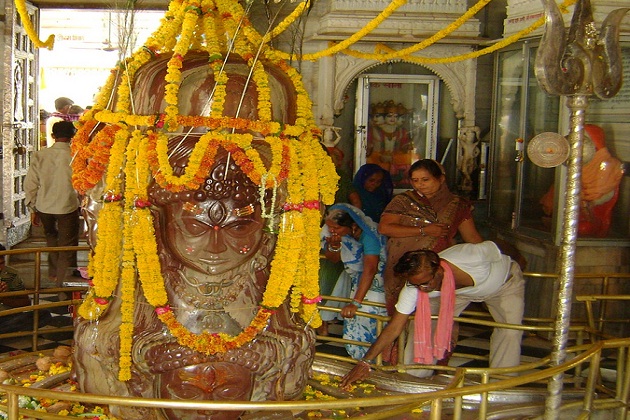Pashupatinath Temple Nepal, Temples
Pashupatinath Temple of Nepal | History, Importance, and interesting facts

Nepal is a picturesque country that takes pride in its culture and heritage. Nepal’s capital Kathmandu is home to the most famous Pashupatinath temple dedicated to lord Rudra.
The temple is one prime Paadal Petra Sthalams – among the 275 places listed as must-visit for Shivaities. Hindu pilgrims from around the world throng to this temple, especially during Mahashivaratri.
Classified as a world heritage site by UNESCO in 1979, the temple complex sprawls along the expanse of the Bagmati river. The historically rich temple is an architectural feast to the eye, and one cannot stop themselves from being drawn to its magical divination.
History of the Temple
To date, there’s uncertainty surrounding the exact origin of the temple. But without a doubt, Pashupatinath temple is said to be the oldest Hindu temple in Kathmandu.
The earliest recorded evidence dates concerning the existence of the temple date back to 400 A.D. As a prominent symbol of Hinduism, mythological stories and legends involving Lord Shiva and his divine consort Goddess Parvati surround this temple.
The temple’s pagoda-style architecture came into being 17th century after its older wooden structure succumbed to termites. Since then, many smaller temples have come up surrounding the temple complex. Bhakti reverberates inside the temple, and one can feel spirituality rise within themselves as soon as one steps inside the temple complex.
We believe the mythological story embedded into history makes this divinity envelope the pilgrims.

Mythological Story
Lord Shiva and Goddess Parvati disguised themselves as deer and came down to Earth to spend some time in the mortal world. When roaming the Earth, they came to the forests of Kathmandu. Enthralled and captivated by the region’s beauty, both divine beings decided to stay back here for eternity.
Sensing the danger of Lord Rudras’s decision, the devas fought with him to bring him back to Kailasa to resume his duties. During the ferocious struggle, Lord Shiva – who was in deer’s form lost one of his antlers. The antler got buried and remained lost to the world.
Mother earth retrieved the antlers from her depths and requested the divine cow kamadhenu to introduce the antler to the world. Kamadhenu came down to Earth and started going to the spot to offer milk to the antler. This unique trait gathered the attention of the locals. Upon excavating the area, they discovered the antlers. As the locals were familiar with the legend, it did not take long for them to realize its importance. They soon constructed a temple around the area in 400 AD and started to worship these antlers as the first lingam.
Evolution of the temple’s architecture
From the inscriptions found by the temple, it is evident that a wooden temple existed during the year 800 AD during the period of king Supusapa Deva. He built a five-storey wooden structure expanding the then temple. After him, around the 13th century, king Ananta Malla asked his artisans to add beautiful designs to the temple.
With the passage of time and incorrect maintenance of the temple, the ancient architecture succumbed to the termite attack. The current temple complex, which has more than 450 temples, came into being in the 17th century. Since then, Pashupatinath temple has remained a prominent pilgrim spot for Hindus worldwide.

Twelve Fascinating Facts related to the Pashupatinath Temple
- This lingam temple is unique, as it has four sides. The god is a five-sided structure, and the top part is called Ishan (ee-shh-an).
- The majority of the temple’s artwork is composed of gold.
- Pashupatinath temple is one of the few temples in the world that only permits Hindus to enter the inner courtyard and main temple.
- The temple’s structure has gold on the roof and tower, and silver sheets cover the temple’s door.
- Hindu doctrine holds that a soul would not be born as a human in rebirth if it commits crimes. Instead, it will assume an animal shape. According to popular beliefs and local folklore, a visit to the temple will wash the sins, and one will take rebirth in human form.
- The enormous bull statue on the temple premises also has a gold covering.
- Except for a few cracks, the ancient Pashupathinath temple remained almost unharmed in 2015 when a 7.8 magnitude earthquake rattled the Kathmandu valley.
- The temple is also known as the “home of holy sadhus.”
- The temple priests belong to the Bhatt community from the southern Indian state of Karnataka.
- According to different sources, Prachanda Deva, a Licchavi king, built the first temple in 400 AD.
- The Pashupatinath temple receives over 2 million visitors on Mahashivaratri alone.
- The temple is home to one of the 12 jyotirlingas.
- Of the four entrances, only the western gate remains open throughout the year.

Pashupatinath Temple Working Details
Temple timings:
- The inner sanctum is open from 4 AM to 9 PM
- Devotees are allowed to visit lingam between 5 AM to 12 PM and 5 AM to 7 PM.
Temple rituals:
- Temple opens to visitors at 4 AM.
- Priests enter the temple for the morning rituals and complete them by 8:30 AM.
- Priests offer Bhog or Naivedyam to GOD at 9:30 AM.
- From 10:00 AM till 1:30 PM, priests offer pujas based on devotees’ requests.
- Priests offer noon naivedyam or bhog to god between 1:45 PM to 2:00 PM and close the temple for noon.
- Evening aarti beings at 5:00 PM
- From 6:00 PM, people perform aarti on the banks of the Bagmati river, which include Shiva tandava bhajan and Gangaaarthi.
- After the same, priests offer the last bhog of the day to the lord and close the doors by 9 PM
Reaching the temple:
The best way for international tourists to reach the Pashupatinath temple is by Air. The temple is around 3 km away from the temple, and one can go to the temple by taxi or local transport.
Best time to visit:
- The best time to visit is from October to December when the weather is pleasant.
- One can know the flavors of the locals during festivities like Teej, Maha Shiv Ratri, and Bala Chaturthi.
If you are eager to visit the temple, let us know what more information you might need. If you have already visited the temple, let us know what we have missed. Either way, leave your feedback to let us know your thoughts.



